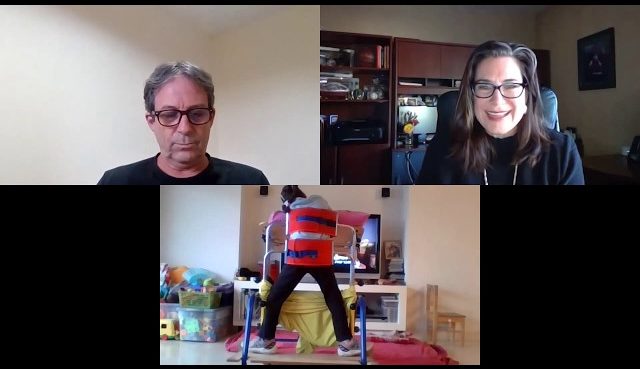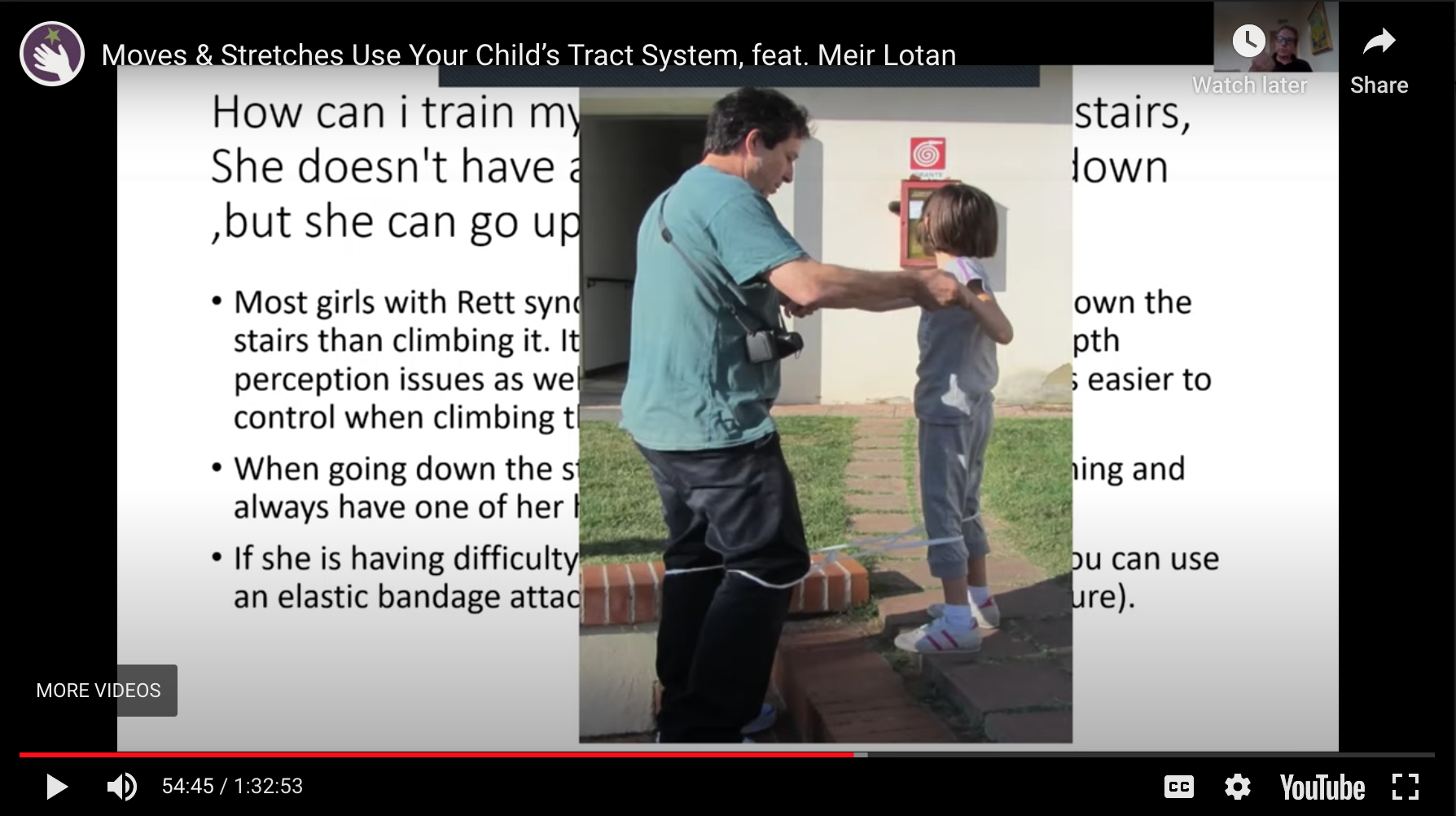Inside the Lab with Meir Lotan
 “There is a saying in Hebrew,” Meir Lotan, PT, PhD, Associate Professor at Ariel University in Israel says, “If you give a hungry person a fish, then he won’t be hungry for a day. But if you give him a rod or a net and you teach him how to fish, then he will never be hungry for the rest of his life.”
“There is a saying in Hebrew,” Meir Lotan, PT, PhD, Associate Professor at Ariel University in Israel says, “If you give a hungry person a fish, then he won’t be hungry for a day. But if you give him a rod or a net and you teach him how to fish, then he will never be hungry for the rest of his life.”
This philosophy guides his current work on physical therapy for scoliosis, a condition where the spine is abnormally curved, in individuals with Rett syndrome.
An estimated 80-85% of patients with Rett syndrome have some degree of scoliosis. In some of these cases, the severity of this scoliosis rapidly increases. This increased curvature might make moving, sitting, or standing challenging, if not impossible, for the individual.
Currently, there are three options for treating scoliosis in individuals with Rett syndrome: a rigid corset, spinal fusion surgery, and physical intervention (such as physical therapy, hydrotherapy, or hippotherapy). Rigid corsets restrict movement, and those wearing them require extra support from their caregivers. Spinal surgery is invasive and an extremely stressful option for parents to consider for their child. Physical intervention is safe and accessible. However, most physical therapists believe that they can’t make a difference in treating scoliosis in Rett syndrome.
But not Lotan.
He believes that if he teaches the families of an individual with Rett syndrome how to construct their day in a more challenging and therapeutic way, it’ll make a difference, and that we will find that physical intervention can be just as effective (if not more effective) as the other options.
Lotan’s Needed Physical Intervention Research
Thanks to a $150,000 HeART grant award from International Rett Syndrome Foundation, Lotan is getting the chance to make his dream of scientifically testing his idea come true.
In his study design, Lotan states that he will train a group of 20 patients with Rett syndrome diagnosed with scoliosis along with their families, caregivers, and therapists in the guiding principles of a physical intervention program. He will also show them how to adapt the program to each individual girl depending on her condition, needs, personality, and daily routines. To further support the patient’s progress, he is also developing a phone app that reminds caregivers which exercises to do and when to do them.
This design and its motivation come from Lotan’s 30 years of experience practicing physical therapy with individuals with Rett syndrome and scoliosis.
When Lotan began this practice 30 years ago, there was almost no research being done on physical therapy for those with developmental disabilities like Rett syndrome. Further, he found little hope expressed from others about what could be done to improve outcomes for these patients.
“Everyone said there was nothing you could do with them,” Lotan recalls of that time, “[They told me] these girls [with Rett syndrome] understand nothing. But when I looked in these girls’ eyes, I saw something different. [I knew] there was something inside these girls, and that they did understand.”
What Lotan saw and continues to see in the hundreds of individuals he has worked with over the course of his career gives him the hope and motivation to try to make a difference. Working directly with them as a clinician as he does every day, has also given him ideas about how to improve their physical condition.
“This is where the good ideas come from: meeting the girls themselves,” Lotan says.
The Strong Case for Lotan’s Current Research
Lotan’s ideas have already produced life-changing results for a few individuals. In fact, Lotan has based the program he is testing through his IRSF grant on his experience halting and even reversing scoliosis through physical therapy.
Lotan smiles as he recounts the case of a girl who was a “human statue” who clearly wore her anxiety and sadness on her face because of her scoliosis. Through the physical therapy program Lotan built alongside this girl’s family and caregivers, her scoliosis dramatically improved. She actually learned to meditate and release her “frozen” body, thereby straightening her bent back and becoming a new person. Those around her could see the joy on her face as she moved more freely about.
As powerful as this and the other case studies Lotan recounts are, without his current study, they remain anecdotes that others may dismiss. By testing his program in many children, he may obtain the results he needs to scientifically prove his concept is working.
Lotan strongly desires to prove his case so that, “maybe other people will start implementing this method, and more children with disabilities might be helped.”
Hope for The Present And Future
There has never been a better time for Lotan to be doing this research. Because of the COVID-19 pandemic, many families have had to forgo their routine visits to their physical therapist’s office. As a result, many of these families thought their loved one’s condition would worsen during the lockdowns. But thanks to Lotan’s methods that involve the family in the patient’s physical activity, individuals with Rett syndrome and their families can even expect an improvement in their quality of life instead.
In the long term, Lotan hopes his ideas will change the way others approach physical therapy for individuals with disabilities. And when he teaches physical therapists in-training at Ariel University, he tries his best to pass his philosophy on to the next generation.
Lotan says, “I want my students to come out of their academic program thinking the same way I do. There are physical therapists who think they can’t make a lot of difference for the children they treat. But with the right approach, they actually can make a significant difference for the children and their families.”
Resources
Dr. Lotan provided live trainings for at-home exercises and activities for families to use during COVID-19. Check out his videos.




